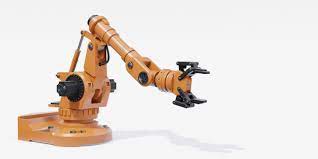In the realm of automation and robotics, End of Arm Tools (EOAT) play a pivotal role in transforming industrial processes. These specialized devices, also known as robotic end effectors, are the critical components at the terminus of a robotic arm, responsible for interacting with the workpiece or environment. Their design and functionality are crucial in determining the success and efficiency of robotic applications across various industries. This article delves into the multifaceted world of End of Arm Tools, examining their types, applications, and the remarkable impact they have on modern manufacturing. Wikipedia.org
Types of End of Arm Tools
End of Arm Tools come in a diverse array of forms, each tailored to specific tasks and applications. The following are some common types:
- Grippers:
Grippers are perhaps the most ubiquitous EOAT. They function as robotic hands, enabling machines to grasp, hold, and manipulate objects of various shapes, sizes, and materials. There are several types of grippers, including parallel, three-fingered, and vacuum-based variants, each suited for different tasks.
- Vacuum Cups:
Vacuum cups utilize suction to securely grip smooth-surfaced objects. They find extensive use in industries like packaging, logistics, and materials handling, where delicate or irregularly shaped items need to be manipulated with precision.
- Tool Changers:
Tool changers facilitate quick and seamless interchange of different End of Arm Tools, allowing a single robot to perform a wide range of tasks without manual intervention. This versatility significantly enhances operational efficiency.
- Welding Torches:
Designed for tasks such as welding, soldering, and thermal cutting, welding torches are equipped with specialized mechanisms and nozzles that can withstand high temperatures and deliver precise control over the welding process.
- Cutting Tools:
EOAT for cutting applications are equipped with sharp blades or saws, allowing robots to execute tasks like trimming, deburring, and routing with precision and consistency.
Applications of End of Arm Tools
The applications of End of Arm Tools span across numerous industries, revolutionizing manufacturing processes in the following ways:
- Manufacturing and Assembly:
In automotive, electronics, and general manufacturing, EOAT is instrumental in tasks ranging from picking and placing components to intricate assembly processes. Grippers, in particular, are vital in handling objects of varying sizes and geometries.
- Packaging and Material Handling:
Vacuum cups and grippers find extensive use in packaging lines, where they delicately handle items like bottles, boxes, and fragile goods. Their adaptability and precision ensure products are efficiently sorted, stacked, and packaged.
- Welding and Fabrication:
Welding torches, equipped with advanced control systems, enable robots to perform intricate welding tasks with unmatched accuracy. This is especially vital in industries where the quality of welds directly impacts structural integrity and safety.
- Food and Beverage Industry:
EOAT designed for the food industry are constructed with food-grade materials and comply with strict hygiene standards. They handle tasks like sorting, packaging, and palletizing food products, ensuring quality and safety in the process.
- Medical and Pharmaceutical Fields:
In environments where precision and sterility are paramount, End of Arm Tools facilitate tasks such as handling vials, assembling medical devices, and packaging pharmaceutical products with exceptional accuracy and cleanliness.
Impact on Efficiency and Productivity
The incorporation of End of Arm Tools in robotic systems has led to a paradigm shift in manufacturing efficiency and productivity. Here are several ways in which they contribute to enhanced operational performance:
- Improved Cycle Times:
EOAT, with their specialized designs and functionalities, enable robots to perform tasks at a pace and consistency unattainable through manual labor. This leads to reduced cycle times and increased throughput.
- Enhanced Accuracy and Precision:
The repeatability and precision of End of Arm Tools are unmatched, ensuring that tasks are executed with consistent accuracy, regardless of the duration of operation.
- Reduced Downtime:
Tool changers allow robots to switch between different End of Arm Tools seamlessly, eliminating the need for manual intervention. This results in significantly reduced downtime between tasks or when transitioning between different stages of production.
- Increased Flexibility:
The adaptability of robots equipped with interchangeable EOAT allows for swift reconfiguration to accommodate various tasks. This versatility translates into a more agile and responsive manufacturing environment.
Conclusion
End of Arm Tools have emerged as indispensable components in the domain of robotics and automation. Their versatility, precision, and adaptability have revolutionized industries ranging from manufacturing and assembly to packaging and healthcare. By optimizing processes, reducing cycle times, and enhancing accuracy, EOAT have ushered in a new era of efficiency and productivity in modern manufacturing. As technology continues to advance, we can expect even more sophisticated and specialized End of Arm Tools to further push the boundaries of what is achievable in automated production. Visit official website qviro.com

